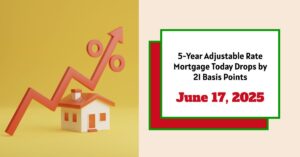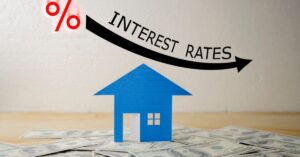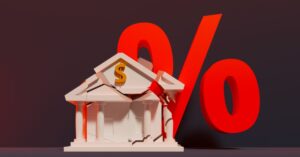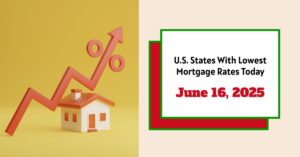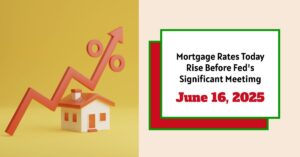Houston neighborhoods come with an urban charm and a family-friendly vibe. Houston alternately makes the news for massive traffic jams, hurricanes that periodically hit the city, falling oil prices, and its rampant rate of growth. For example, Hurricane Harvey flooded more than a hundred thousand homes in August 2017 which kind of froze the Houston real estate market.
However, the Houston housing market recovered from that bust and is booming. Factors like affordable housing and good-paying jobs are still drawing people to the area. When considering investment properties, few cities offer the potential that Houston does. Boasting a robust economy, a diverse population, and a thriving housing market, the city stands out as a prime location for savvy investors.
This article will explore the best neighborhoods in Houston to buy investment properties, where smart buyers can maximize both rental income and property appreciation.
Key Takeaways
Houston's Growing Economy and Real Estate Landscape
Houston is the fourth-largest city in the United States, recognized for its significant economic contributions stemming from the energy, healthcare, and aerospace sectors. This economic stability translates into a vibrant real estate market, with areas seeing consistent growth in property values and rental demands.
According to recent trends, the average price of a single-family home in Houston is hovering around $425,150 as of December 2024, reflecting a 5.0% increase from the previous year. As we navigate the upcoming years, homeowners and investors alike are advised to capitalize on emerging neighborhoods that promise significant returns.
Best Neighborhoods for Investment Properties in Houston
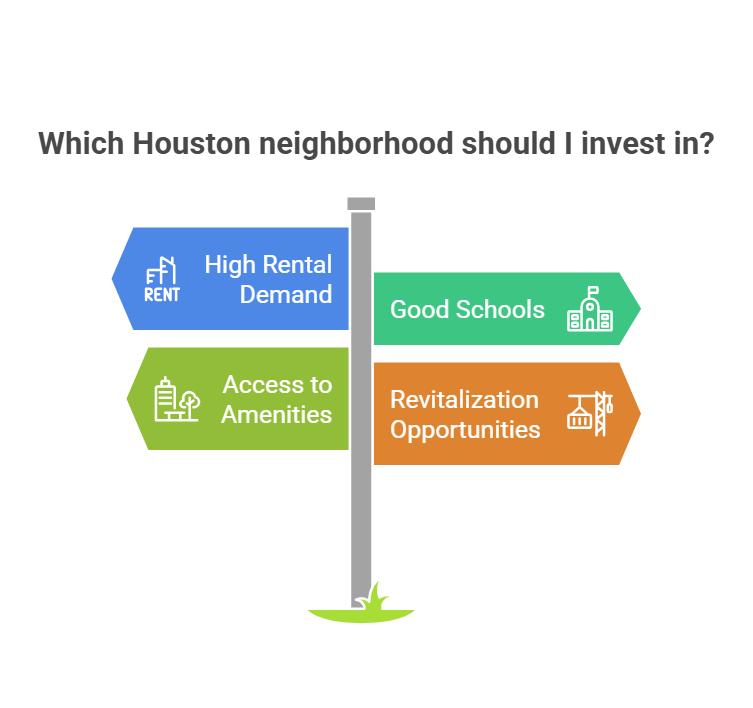
1. Oak Forest
Historically, Oak Forest has proven to be one of the best neighborhoods for real estate investment due to its rapid appreciation, with property values rising over 60% in the last decade. The area is known for its family-friendly atmosphere and excellent school districts, attracting a consistent influx of new residents. This neighborhood's charm is enhanced by its proximity to downtown Houston, making it appealing for both families and young professionals.
2. The Woodlands
Another notable mention is The Woodlands, a master-planned community with a strong rental market, excellent schools, and low crime rates. The community offers a mix of luxury homes and more affordable properties, making it an attractive option for a variety of investors. The ongoing development of corporate headquarters and retail options continues to enhance its appeal (BiggerPockets).
3. Memorial
The Memorial neighborhood, located just west of Downtown Houston along I-10, is recognized for its affluent residents and top-rated schools. It enjoys a reputation for low inventory and high demand, which makes it a coveted area for investment. Memorial's strategic location and upscale living conditions attract professionals and families, ensuring properties here maintain their value (Roofstock).
4. Greater East End
Fast becoming a trendy spot, the Greater East End is experiencing a renaissance with gentrification and new developments. Affordable housing options and its proximity to downtown Houston appeal to young professionals looking for rental opportunities. Investors focusing on emerging neighborhoods will find excellent returns as this area continues to develop (Residential Leasing).
5. West University
Known locally as West U, this affluent neighborhood is characterized by upscale single-family homes and townhouses. With its close-knit community feel and proximity to recreational amenities, West University consistently ranks among the top choices for property investments. Investors can expect to see strong rental rates, particularly from families and young professionals who prioritize quality living (Ark7).
6. Midtown
In recent years, Midtown has transformed into one of Houston’s most buzzing urban neighborhoods, offering a mix of nightlife, dining, and cultural activities. Its appeal to young adults, especially those just starting their careers, makes it a solid choice for rental properties. The ongoing infrastructure improvements and its walkability feature make Midtown an attractive investment for those looking to capitalize on high rental demand.
7. Cypress
Cypress is emerging as one of the best places to invest in property within the Houston area, offering a respectable median rent of about $2,290 across various property types. The area has a strong community feel and is popular among families, which is conducive to stable rental income (Texas Real Estate Source).
8. Katy
Katy, one of the most family-friendly suburbs of Houston, also emerges as a top investment area. Its highly rated schools and abundant amenities make it attractive to both homebuyers and renters. With median property prices relatively affordable compared to inner-city Houston, it offers a high rental yield. New developments continue to bolster property values (Real Wealth).
9. Spring
The Spring area attracts investors due to its affordable housing and excellent community amenities. Its access to major highways and proximity to Houston make it a good choice for those who commute to the city. Spring's blend of single-family homes and townhouses makes it appealing for a broad range of renters looking for convenience and quality (HAR).
10. Pearland
Pearland is another suburb consistently recognized for its investment potential, with a growing market characterized by strong demand for rentals. The steady influx of families and professionals, combined with the town's convenient access to Houston's job market, continues to drive property appreciation and stability. Investors here can look forward to a great rental yield as the community continues to expand (HAR).
Factors Influencing Investment Success in Houston Neighborhoods
Investing in real estate is heavily influenced by market trends, which in Houston can shift due to various factors. Here are key considerations that make certain neighborhoods more appealing for investment:
- Economic Indicators: Look for neighborhoods that align with Houston's continued economic growth, such as areas near major job centers.
- School District Ratings: Properties in reputable school districts generally have higher values and rental demand. Families prioritize education, so neighborhoods that offer strong schools often see quicker rental turnover and better appreciation.
- Amenities and Infrastructure: Areas with access to parks, restaurants, and retail tend to attract renters who are looking for convenience, making those properties more desirable.
- Future Developments: Major infrastructural projects—like new highways or public transit expansions—often increase property values in the surrounding neighborhoods.
By aligning investment strategies with these factors, buyers can significantly enhance their chances of securing lucrative properties that appreciate over time.
Frequently Asked Questions (FAQs)
1. What is the average rental yield in Houston neighborhoods?
The average rental yield in Houston neighborhoods varies by location but generally falls between 6% to 9%. Areas experiencing growth and high demand, such as Oak Forest and The Woodlands, can often exceed these averages due to competitive rental rates.
2. How do I choose the best neighborhood for investment in Houston?
To choose the best neighborhood for investment, consider factors such as rental demand, property appreciation, local amenities, school district ratings, and economic growth. Research emerging areas and consult real estate reports to find neighborhoods with the highest potential.
3. Are there risks associated with investing in Houston real estate?
Yes, as with any investment, there are risks, including market fluctuations, economic downturns, and specific neighborhood challenges. However, thorough research, careful selection of neighborhoods, and understanding of market dynamics can mitigate many risks.
4. How does Houston's market compare to other Texas cities for real estate investment?
Houston's market is often seen as more affordable compared to cities like Austin and Dallas, with strong rental yields and robust economic growth. It is especially favorable for investors interested in single-family rentals and suburban developments.
5. What is the predicted real estate trend for Houston in 2024?
The trends indicate a steady growth trajectory, with slight fluctuations in property values. Investors can expect strong demand driven by economic stability and job growth, making Houston a promising market for investment properties into 2025.
Conclusion
Navigating the Houston real estate market requires an understanding of its neighborhoods and the unique attributes each has to offer. With areas like Oak Forest, The Woodlands, and Memorial presenting strong investment potential, the opportunities are substantial for both new and seasoned investors alike. Houston's dynamic economy, diverse population, and ongoing developments provide a solid foundation for creating wealth through real estate investment.
Work with Norada in 2025, Your Trusted Source for
“Houston Real Estate Investment”
Discover high-quality, ready-to-rent properties designed to deliver consistent returns.
Contact us today to expand your real estate portfolio with confidence.
Contact our investment counselors (No Obligation):
(800) 611-3060
Read More:
- Houston Turnkey Investment Properties for Sale
- Houston Real Estate Market Forecast 2025: What to Expect
- Houston Housing Market: Prices, Trends, Forecast 2025
- Houston Real Estate Investment: Should You Invest in Houston?
- Housing Market Trends: Big Investors Buy in Houston, Atlanta, Dallas, Charlotte
- 17 Facts That Make Houston the Best City in America
- Texas Housing Market: Prices, Trends, Predictions


